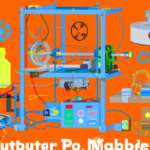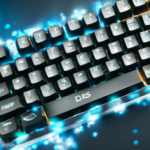
Introduction
The world of cosplay is constantly evolving, with new technological advancements paving the way for innovative costumes and accessories. One of the most exciting developments in recent years has been the rise of 3D printed cosplay. While traditional cosplay involves creating costumes and props from scratch using materials like foam, fabric, and plastic, 3D printing allows creators to design and produce parts that are more intricate, precise, and realistic than ever before. In this article, we will explore the intersection of fantasy and technology and how 3D printing has revolutionized the cosplay world.
What is 3D Printed Cosplay?
At its core, 3D printed cosplay involves using computer-aided design (CAD) software to create a virtual model of a costume or prop. This model is then sent to a 3D printer, which uses layers of plastic filament to gradually build the part, creating a three-dimensional object. The process of 3D printing makes it easier for cosplayers to achieve a high level of detail and intricacy in their creations, as the machine can produce pieces that are more precise than what a person could create by hand. Moreover, 3D printing allows cosplayers to rapidly prototype and test their designs, speeding up the production process and reducing the amount of time spent on trial and error. 3D printed cosplay has therefore become an increasingly popular option among cosplayers looking to push the boundaries of what’s possible in the world of cosplay.
The Benefits of 3D Printed Cosplay
The benefits of 3D printed cosplay are numerous, both for cosplayers and for the broader cosplay community. First and foremost, 3D printing allows for a level of realism and detail in costumes and props that was previously difficult to achieve. Cosplayers can create intricate designs with greater accuracy, resulting in more impressive and eye-catching costumes. Additionally, 3D printing provides a consistent level of quality, allowing cosplayers to produce multiple identical pieces with a high degree of precision. This helps to ensure that all components of a costume fit together seamlessly and look uniform, contributing to a polished and professional finished product. Finally, 3D printed cosplay offers a way for aspiring cosplayers to break into the hobby without needing extensive crafting skills. While traditional cosplay requires a broad range of skills, including sewing, sculpting, and painting, 3D printing allows almost anyone with access to a printer to produce impressive cosplay creations.
The Future of 3D Printed Cosplay
The future of 3D printed cosplay is exciting and full of possibilities. As 3D printing technology continues to improve, we can expect to see even more intricate and ambitious designs from cosplayers. Beyond simply creating a more detailed costume or prop, there are also possibilities for integrating electronics and other advanced components into 3D printed cosplay. For example, cosplayers could use 3D printing to create parts for animatronic components, LED lighting systems, and other special effects that would be difficult to achieve with traditional materials. Additionally, the cost of 3D printing is continuing to decrease, which should make the technology more accessible to cosplayers of all skill levels and backgrounds. As 3D printing becomes more widespread and affordable, we can expect to see an even bigger explosion of creativity and innovation in the world of cosplay.
The Impact of 3D Printed Cosplay on the Cosplay Community
The rise of 3D printed cosplay has had a significant impact on the cosplay community as a whole. By allowing cosplayers to create more intricate and realistic costumes, 3D printing has elevated the quality and creativity of cosplay, setting a new standard for expectations within the community. It has also made cosplay more accessible to people who may not have otherwise had the skills or resources to create detailed costumes and props from scratch. The sense of community among cosplayers has also been strengthened by the sharing of 3D printing files and designs, which allow people to easily create and modify parts for their own costumes. As 3D printing technology continues to advance, it’s exciting to think about the new possibilities it may unlock for the cosplay community, and the amazing creations that are yet to come.
In addition to benefiting cosplayers, the rise of 3D printed cosplay is also having a wider impact beyond the cosplay community. This technology is influencing new applications in fields such as special effects, prop-making, and even medical prosthetics. The level of precision that can be achieved with 3D printing is allowing for more realistic-looking props and prosthetics in the film industry. In the fields of science and medicine, 3D printing is being used to create implantable medical devices, prostheses, and even human organs using living cells, potentially revolutionizing the way we think about healthcare and recovery. It’s clear that 3D printing is a groundbreaking technology that has the potential to change our world in countless ways beyond just cosplay.
Conclusion
To conclude, the rise of 3D printed cosplay represents a major shift in the way we think about costuming and technology. The ability to create complex and detailed costumes using 3D printing has opened up new possibilities for cosplayers, allowing them to fully realize their dream costumes and explore new realms of creativity. Beyond cosplay, 3D printing is also transforming many industries and fields, from medicine to film and beyond. As technology continues to evolve, we are excited to see how 3D printing will continue to push the boundaries of what’s possible in the world of cosplay and beyond. With the many benefits and possibilities that 3D printing offers, it’s clear that this groundbreaking technology is here to stay.







1 thought on “3D Printed Cosplay: When Fantasy Meets Technology”